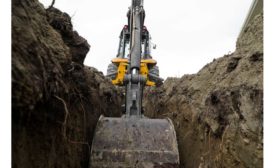A NIOSH Science Blog post
Scott Earnest PhD PE CSP
Scott Earnest, PhD, PE, CSP works in the NIOSH Office of Construction Safety and Health.
ARTICLES
A NIOSH Science Blog post
Improving occupational safety and health in the construction and mining industries
May 31, 2018
Get our new eMagazine delivered to your inbox every month.
Stay in the know on the latest safety trends.
SUBSCRIBE TODAYCopyright ©2024. All Rights Reserved BNP Media.
Design, CMS, Hosting & Web Development :: ePublishing


